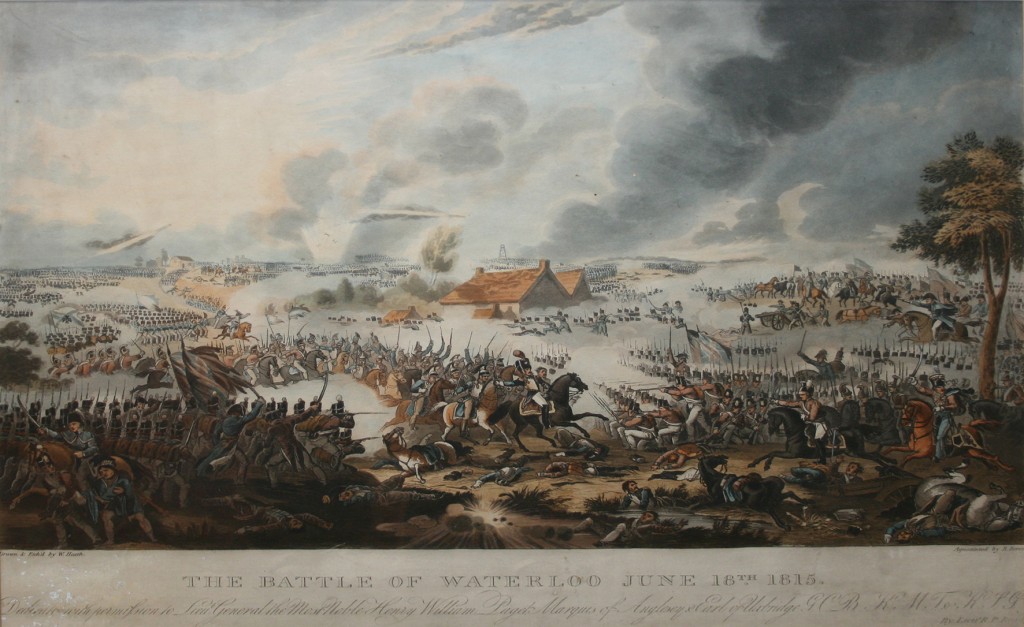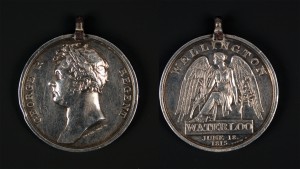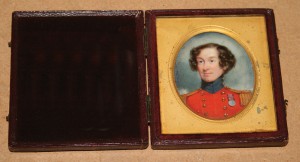
A selling exhibition titled ‘A Wealden Artist Goes to War – Paintings of Gordon Rushmer’ has just opened at the Horsham Museum & Art Gallery
The exhibition was opened by the Tate Gallery’s Lead Curator of British Art to 1900, Alison Smith. She spoke celebrating the artist’s precise draughtsmanship, acute powers of observation and delicate use of colour.
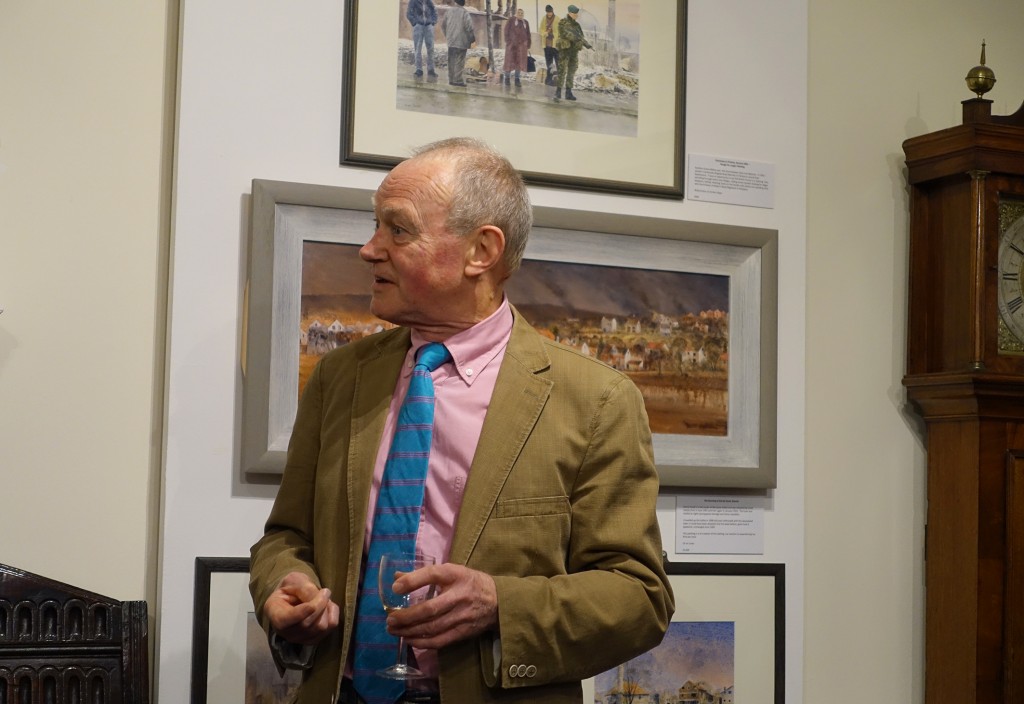
Gordon Rushmer follows in a long tradition of British War Artists. There is a seriousness, restraint and dignity in the man and his work which is unexpected and humbling.
Gordon describes how he seeks to memorialize a particular moment in time so that it can continue to live in and through his paintings. He remarks “It is history being worked through.”
I ask him about his working method in bringing a picture into being. He says “It starts with an idea which can take a year to come together.” I begin to understand that the stillness evident in many of his paintings comes out of a process of reflection. Once Gordon has discerned what it is he wants to convey he works from his photographs and sketches made in the field. The pictures record the memory of a particular moment which transcends time and the purely visual.
I ask whether the proliferation of images of war in the news, on our televisions and in our newspapers, is in danger of desensitizing the public. Gordon replies “I have to find another way in. It’s what you don’t say which allows the public to be involved – to be questioning.”
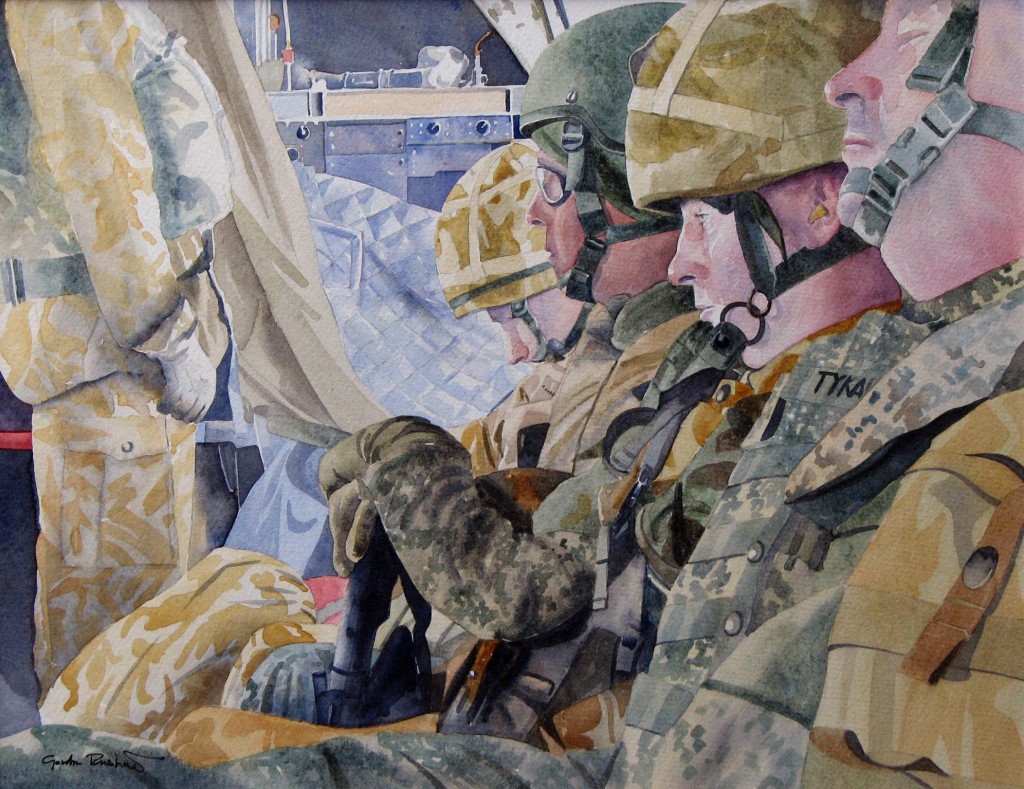
My eye is taken by a watercolour titled ‘Flying into Lashkar Gah, Helmand, Afghanistan, 2007’. Whilst the painting is very obviously Gordon’s the palette and delicate handling of paint is reminiscent of the 20th century British War artist, Eric Ravilious. Like Ravilious’ paintings there is a reflective stillness; that sense of a sense of a moment out of time. The composition connects the viewer with the scene. It is as though we are seated in the row of soldiers. Gordon comments “They’re tuckered out with the fatigue of being in combat. It’s really noisy in a chinook. Even with the earplugs in you can hear the boom, boom, boom of the rota blades.”
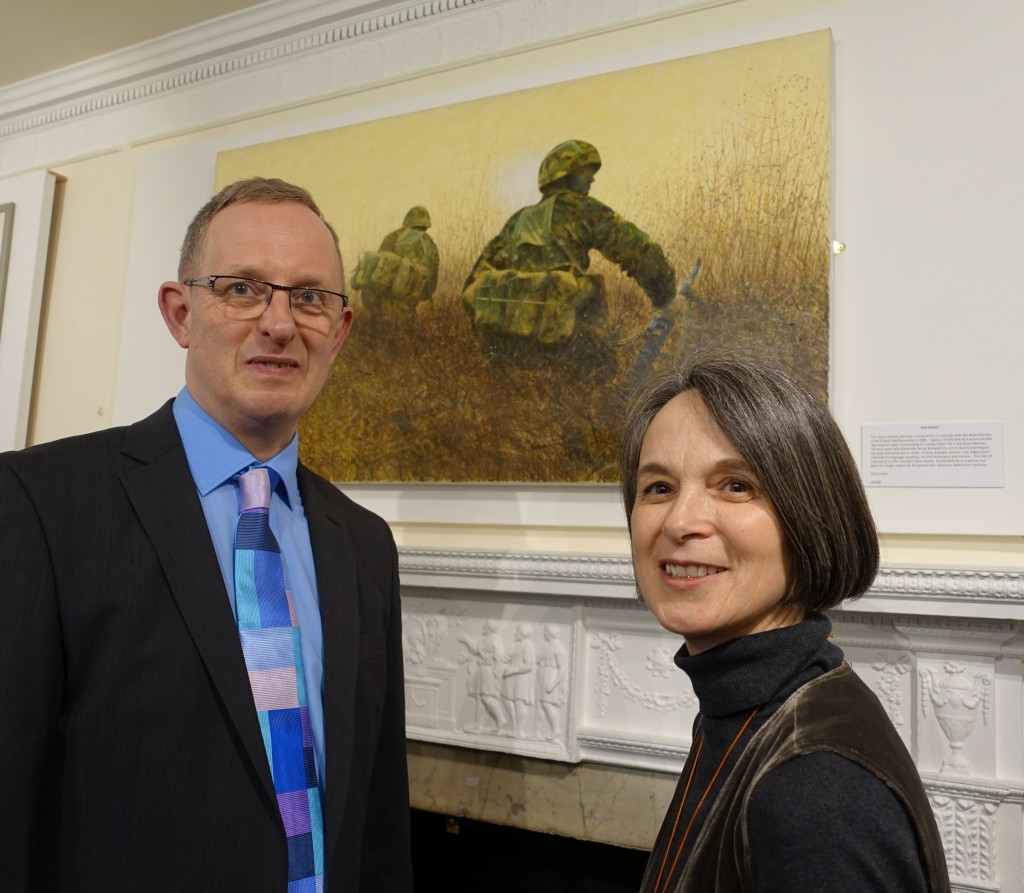
Gordon talks about how his insight as a war artist has informed the huge respect in which he holds the British service men and women he accompanies. He says “You are one of the troops, unarmed, but one of their own. There is a real camaraderie. They won’t take you into firefights unless they know you’re ok.”
The watercolour ‘Destroying Saddam’s Weapons, Iraq 2004’ once again firmly places Gordon Rushmer’s art in the procession of British War artists. The cloud of the explosion and palette reminds me of Paul Nash’s work in the Second World War. Gordon reflects “In my opinion this was an ill judged war. Iraq is still a country in turmoil with little sign of a peaceful outcome.” However, this gifted artist is keen to stress the remarkable role of our armed forces, even in this situation, as they seek to make life better where they serve. I comment on the difficulties that they must face in distinguishing between what is right and what is wrong in the theatre of war. I have always admired the discipline of our soldiers and ask if this lends their task honour. Gordon agrees and explains the soldiers’ deep sense of service, fighting for Queen, country and their comrades.
The precise draughtsmanship, acute powers of observation and delicate use of colour, which are apparent in Gordon Rushmer’s studies of war, are also employed in the counterbalance of his paintings of Sussex and the Weald which make up half of the pictures in this show.
The depth and layers of experience in this reflective artist’s work is exceptional and clearly visible in this important exhibition. Curator, Jeremy Knight is once again deserving of our thanks. I am delighted that Toovey’s are supporting this show.
‘A Wealden Artist Goes to War – Paintings of Gordon Rushmer’ runs at the Horsham District Council Horsham Museum & Art Gallery, The Causeway, Horsham, until 28th May 2016. Entrance to the Museum and exhibition is free. It provides a rare opportunity not only to see, but also to acquire the work of an artist who is represented in the collections of Tate and The Imperial War Museum. For more information go to www.horshammuseum.org or telephone 01403 254959.
By Rupert Toovey, a senior director of Toovey’s, the leading fine art auction house in West Sussex, based on the A24 at Washington. Originally published in the West Sussex Gazette.
